Workation » Best Workation Locations and Why You Should Visit Them » Italy Workation – Working and Vacationing in Italy » The Best Time to Visit Italy for Workation
The Best Time to Visit Italy for Workation
The best time to visit Italy is May to June or September to October for your Italy Workation package. These months reflect the shoulder season and will give you the best overall experience in Italy’s famous Mediterranean beaches and with the overall activities. Workation has no seasonal limits, giving you tremendous options for when to plan your travel, especially during non-peak months to enjoy time with fewer crowds.
Italy is consistently ranked as one of the most visited countries in the world with travelers chomping at the bit to visit the rich ancient history, masterful art, and natural beauty. The true best time to visit Italy really depends on the activities you want to pursue and the different areas of Italy you want to explore.
The cool waters of the Adriatic Sea will feel rigid if dipping your toes into the tide in winter instead of summer. The luxuriant greenery and blossoming wildflowers of the Dolomite’s alpine pastures strike a profound contrast to the expectant reflective snow when staying in a ski resort during summer instead of winter.
Those who have the ability to travel to Italy outside of the “Peak Season” should, but remember, other travelers and Workationers have the same concerns as you and hope to get the most out of their time in Italy with the least amount of hassle. Use the following as guidelines for the best time to visit Italy for you and your Workation.
The cool waters of the Adriatic Sea will feel rigid if dipping your toes into the tide in winter instead of summer. The luxuriant greenery and blossoming wildflowers of the Dolomite’s alpine pastures strike a profound contrast to the expectant reflective snow when staying in a ski resort during summer instead of winter.
Those who have the ability to travel to Italy outside of the “Peak Season” should, but remember, other travelers and Workationers have the same concerns as you and hope to get the most out of their time in Italy with the least amount of hassle. Use the following as guidelines for the best time to visit Italy for you and your Workation.
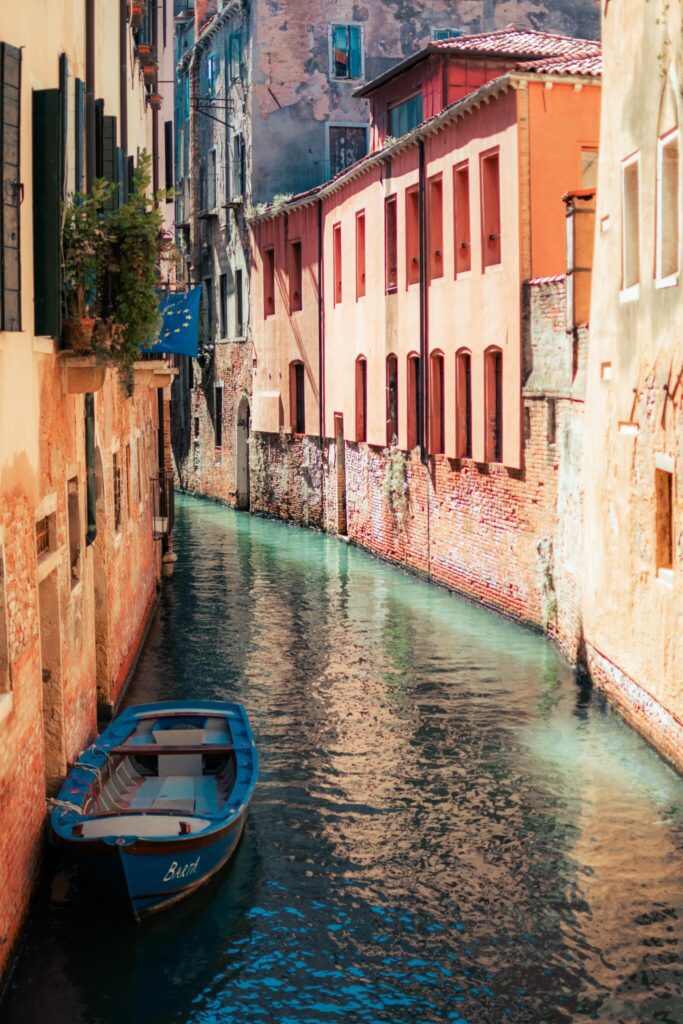
Weather and When to Go
The weather changes the colors of the countryside between spring and autumn, while the festivities in the cities change between summer and winter.
There is no singular best time to visit Italy. Each season represents something unique and different about the landscape, culture, and traditions to create alternate experiences. Traditionally summer is the most popular time to visit Italy, with schools in the United States, Canada, and the UK dismissed for vacation. But the crowds of summer offer diminishing returns in the most popular cities and towns, making it hard to explore, experience, and discover, with wait times at the museums reaching hours long and actual locals leaving on holiday from mid-August, coinciding with the Catholic calendar and the Feast of the Assumption of Mary, to the first of September.
But Italians do not disappear from Italy during the height of summer, with the peak of the travel season offering a stunning impression of local life in smaller communities and the popular resort getaways in the south or the cooler alpine climates in the north.
An Overview of Italy’s Seasons
There are little surprises to Italy’s weather systems, which are considered the four seasons of the European continent. The winter brings cold weather and snow in the north, especially in the mountainous landscape separating Italy from France, Switzerland, and Austria, along with the Apennines along the bordering regions of Tuscany and Emilia-Romagna. The moisture of Northern Italy causes abundant rainfall throughout the year, most prominently during the summer months.
The weather systems of Central Italy provide a milder shift between summer and winter, with a shorter and less intense cold season than northern Italy. The summers linger in Central Italy without the balminess of the mountains. The refreshing sea air helps mitigate the humidity around most of the central regions. Temperatures around Rome can reach over 100 degrees Fahrenheit during July and August, but average a high of 86 degrees Fahrenheit in Tuscany. Rain falls mostly in the winter, as opposed to Northern Italy’s summer months.
Southern Italy boasts the popular Mediterranean climate for which Italy is most known, averaging temperatures of 77 degrees Fahrenheit in July, shaping the hot, dry and long southern Italian days. Rain in the southern regions fall during autumn, winter, and spring. The southern coasts of Sicily and Sardinia are the driest areas of Italy. However, the mild seasons of Italy’s south provide a navigable year-round climate.
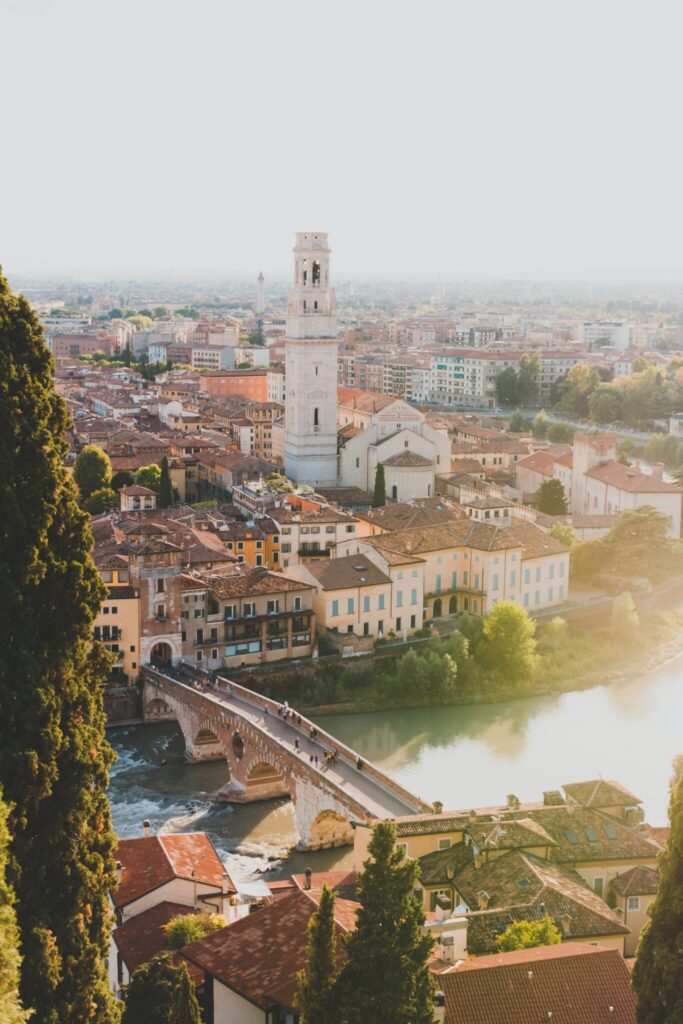
Is There a Perfect Time to Visit Italy?
May to June and September to October are the most ideal months to visit Italy but there is no perfect time to visit. Rome does not stop as a popular destination outside of summer, nor do locals in Venice suddenly welcome you into their homes because you are the single visitor to the lagoon in winter.
The different times of year simply provide different experiences. The winter does not always mean the water along the southern shores of Italy is too cold to swim in, while the summer doesn’t mean you can trek the plains and mountains of the Italian Alps without caution.
Life in Italy has endured for over two millennia and will continue to feature history, culture, and natural wonderment in rain, snow, or shine. Instead of the familiar four seasons of summer, winter, spring, and fall, there are only three seasons that matter when traveling to and around Italy: low season, shoulder season, and high season.
May, June, September and October
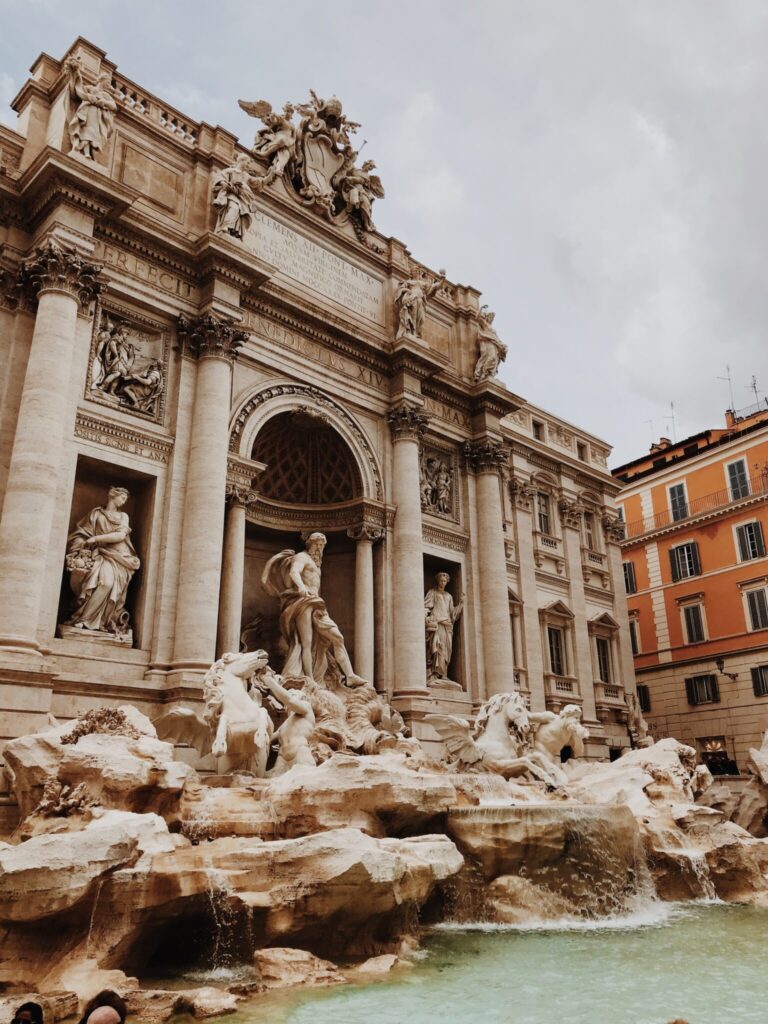
When is peak season for visiting Italy?
July and August are peak months for visiting Italy creating the dreaded peak season.
Summer is the best season for many people, especially families, to visit Italy, tourists on similar schedules shaped mainly by their child’s school system or the two-week vacation calendar their job allows, crowd the main cities of Rome, Florence, and Venice or the popular region of Tuscany. Italians take their vacation between August and September, with local shops closing during the holiday between August 15th and September 15th. The air in August across much of Italy grows humid and muggy, made worse by the tight crowds filling piazzas and narrow cobblestone streets.
Hotels and restaurants mark up their prices as a premium for staying home while their neighbors take a break on the coast or in the mountains. Less-visited cities, such as Turin and Milan, feel like ghost towns compared to the major attractions of Venice, Rome, and Florence, with fashionable restaurants and popular night spots closed for the entire month. There are also various festivals in specific towns across Italy held during summer that are fun and unique, including, but not limited to, the Palio horse race in Siena and the Opera Festival in Verona.
Apart from the main season of summer, prices and crowds skyrocket at certain times of year, mainly Christmas, New Year, and Easter, when Italians also like to vacation. When traveling to Italy to ski the Alps and the Dolomites or spend time in the snow, High Season begins in late November and ends in early March, consistent with the snowfall along the northern borders.
When is low season for visiting Italy?
Low season in Italy is between November and March. The low or slow tourist season represents the opposite of the crowds and long lines of the High Season. Summer resorts along the Adriatic and Tyrrhenian Seas have closed, family-run hotels and smaller seasonal museums also shut down. Low Season provides the perfect opportunity to experience the cultural events of larger cities, such as touring popular museums, archeological sites, and medieval towns. It is also the best time to explore Venice’s canals without the maddening packs of people clogging the waterways with gondolas.
Low season is a great time to visit the Galleria dell’Accademia to see Michelangelo’s David or walk the halls of the Uffizi, both located in Florence. Fewer people mean less time waiting in line and provides ample opportunities to interact with locals in Italy. The colder air also makes the sporadic crowds of Rome more bearable.
From certain perspectives, visiting Italy during the Low Season is ideal. The cities are quieter, the lines are shorter, and you can have the chance for a more immersive Italian experience.
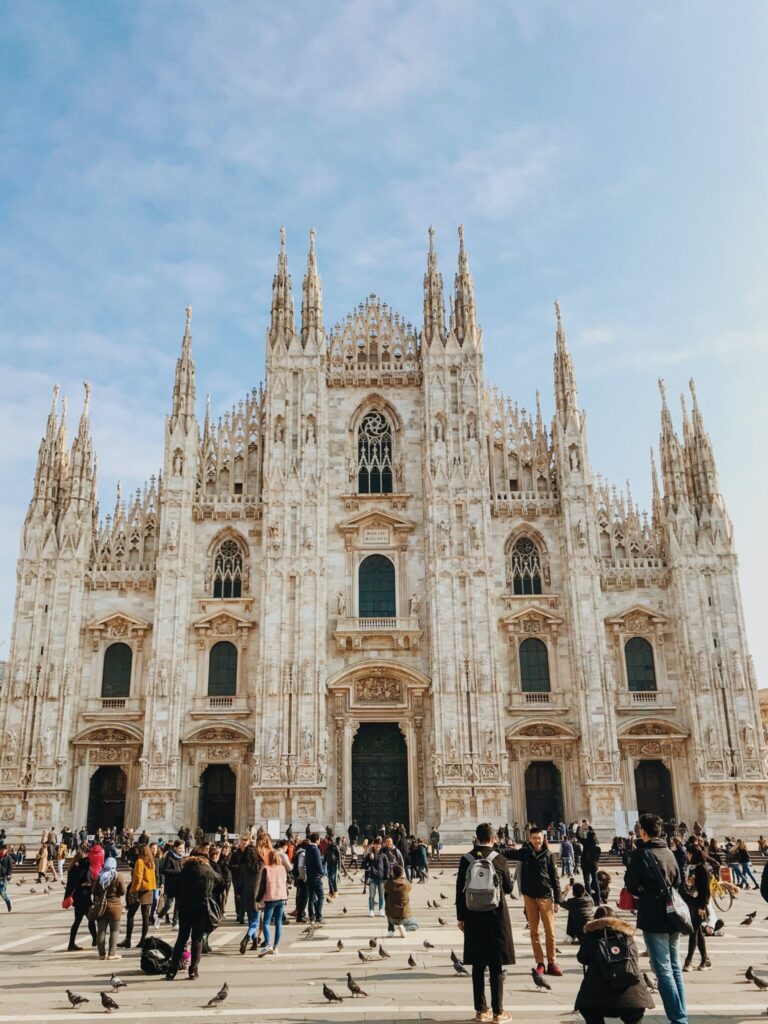
When is shoulder season for visiting Italy?
Shoulder Season in Italy is between April and June and September to October. The shoulder season flanks both low and high tourist seasons, spreading across both spring and autumn. The large crowds generally depart Italy in early September to return home, while the summer resorts in the south remain open until mid-September. It is also still warm enough to enjoy the beauty of the famous beaches and towns of the Amalfi Coast or Cinque Terre before the cold sets in.
The main festivals of the regions begin in spring coinciding with cultural celebrations, produce cultivation, and religious events. The fall ushers in the favored grape harvest across much of Northern and Central Italy. Temperatures remain cool in both spring and autumn, while the colors of the landscape change from winter white to emerald green, or from the lush summer landscape to a shimmering tawny and burnt sage.
Every October Perugia celebrates chocolate with a week-long festival and Bari pays homage to the harvest with a food festival dedicated to vineyards, olive groves, and the season’s bountiful culinary pleasures. The Shoulder Season provides a stable amount of tourists across the country with many visitors focusing on the three most popular destinations of Rome, Florence, and Venice. This is still the best time to visit these major destinations, along with the various regions of Italy.

When is the best time for sightseeing in Italy?
The best time for sightseeing in Italy is May and June or September and October. These months are generally considered the shoulder season, which means fewer crowds, good weather, and better prices. When visiting Italy in the spring or fall months for your Workation, fewer people means better opportunities to see the famous sights like the Vatican Museums, Uffizi Gallery, Venetian canals, and more.
The nicer weather in spring and autumn make it easier to explore without the sweltering humidity that can make the summer heat feel more oppressive. The combination of smaller crowds, better weather, and more favorable prices also gives you more options for where you stay, visit, and explore during your Italy Workation.
When is the best time to visit beaches in Italy?
The best time to visit the beaches in Italy is from May to June or in September and October. The summer months of July and August may seem like obvious times to visit Italy’s beaches during your Workation package but Italy’s beaches in summer are usually overrun with tourists, both foreign and domestic.
International tourists often crowd around the beaches of the Amalfi Coast, Cinque Terre, Capri, Taormina in Sicily, and other famous coastal destinations around the country. Italians, Germans, and French travelers usually visit the resorts in Calabria, Puglia, Rimini, and parts of Sicily. The heat, crowds, and humidity are highest in July and August making May and June or September and October much more comfortable months to enjoy the beaches in Italy during your Workation.

What is the worst time to go to Italy?
The worst time to visit Italy is in July or August. The crowds are at their peak with many families, college students, backpackers, and large tour groups crisscrossing around the country, especially the famous cities and museums, such as Rome, Florence, and Venice.
The intense crowds, mixed with the summer heat and nearly oppressive humidity, make July and August far less comfortable to visit. In the summer, Italians often go on vacation as well making these months of the year far less authentic. Instead, consider traveling for your Italy Workation during the shoulder or low season for a more comfortable, unique, open, and authentic experience.
Witnessing Leonardo da Vinci’s The Last Supper or Michelangelo’s Sistine Chapel is a majestic experience. Standing up close to these masterpieces of western artwork allow you to view the intimate details photographs can’t capture, making you feel part of the work. That feeling of enchantment and gratitude disappears when surrounded by 10 tour groups with chatty tour guides and other members who pass through the galleries taking pictures but otherwise not staying long enough to view the artwork away from the camera lens or phone screen.
Visit the fascinating statue of the Veiled Christ in Cappella Sansevero in Naples and you feel as though you have the work, and the chapel to yourself. Tour the Colosseum in Rome at the beginning of August and you might feel like a gladiator trying to wrestle free from the crowd and the Roman sentinels posing in front of the massive monument when trying to take a photo without featuring a tour guide’s umbrella, an idling bus, or strangers lingering near the entryway.
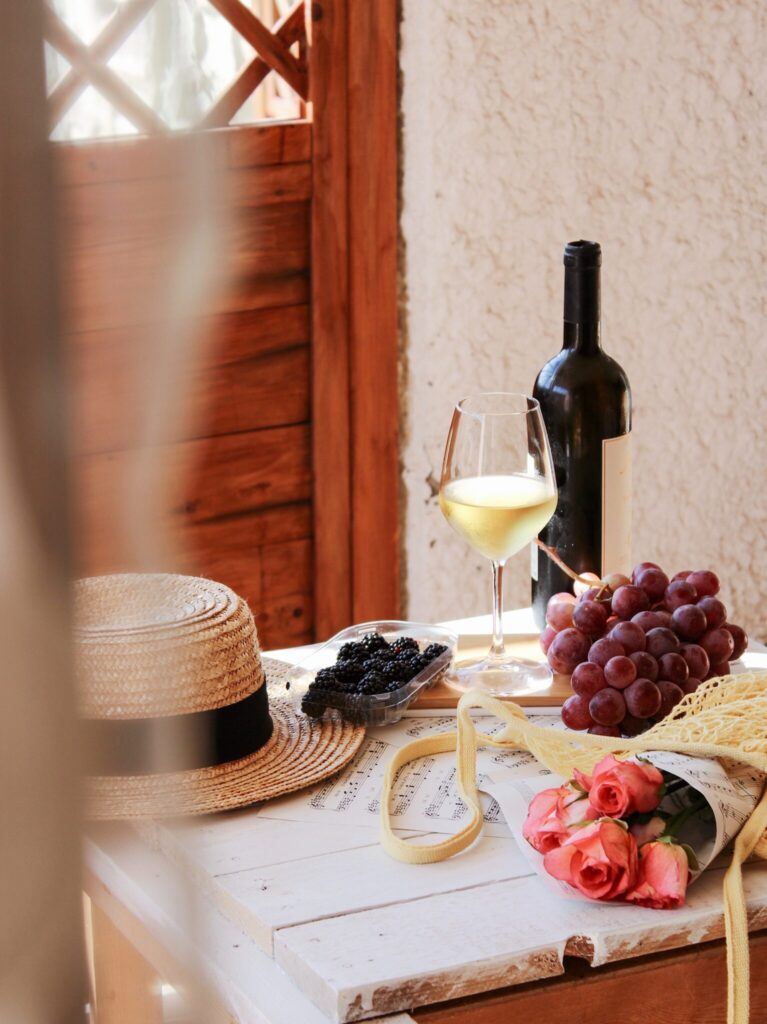
When is wine season in Italy?
Wine seasons in Italy takes place in September and October during the typical harvesting months. The grape harvest is no longer the dreamy vision of locals hand-pruning bushels into baskets and stomping on grapes to make the wine. And while there are places where this activity does exist, the harvest season is still a joyful occasion during which the vines and wines are celebrated in vineyards around the country.
Wine is an essential part of Italian culture and heritage making the harvesting season in September and October a fun time to visit for your Workation in Italy. Participate in the harvest, visit the festivals, or wine taste around a number of towns or famous winegrowing regions to get a true sense of Italy’s vintner spirits.
When is the best time to visit Rome?
The best time to visit Rome is in May and June or September and October. Rome is the most famous city in Italy and sees so many tourists during the peak summer months. Tour groups, private travelers, and cruise ships docking in the port for a day can turn the city into a sweaty carnival in July and August.
With its massive size and incredible number of things to see and do, there are plenty of ways to avoid the crowds and the heat if visiting during peak season but expect long lines and impressive congestion in highlights like the Vatican Museums, Colosseum, Roman Forum, and Trevi Fountain.
By visiting in spring and fall, you have more chances to enjoy the open atmosphere, authentic style of the city’s individual neighborhoods, and the traditional cuisine locals celebrate, as well as the stylish boutique shops.
When is the best time to visit Venice?
The best time to visit Venice is in April or May or in October and November. The shoulder season of spring and fall in Venice are colder but have much better weather in general, as well as fewer crowds. With cruise ships constantly docking at the port allowing throngs of day-trippers into the city, it’s better to avoid the typical cruise season, as well as the hot summer months in Venice when the heat and low tide can create a particularly unpleasant smell.
The spring and autumn months in Venice are beautiful, open, and enjoyable, giving you much more access to the famous canals, great museums, and opulent palaces. St. Mark’s Square may seem crowded no matter the time of year but outside of this famous section of the city, you can find peace, quiet, and unique experiences during your Italy Workation.
When is the best time to visit Naples?
March and April are the best times to visit Naples during your Italy Workation package. The city is the gateway to the Amalfi Coast, sits on the coastline, and provides access to the Bay of Naples, home to the infamous Mount Vesuvius and the ruins of Pompeii.
The spring months in Naples have a mild climate and few crowds, giving you plenty of time and space to enjoy the city’s highlights and surroundings, which includes visiting famous Greek temples at Paestum or traveling to the towns along the Amalfi Coast.
The summer months in Italy are the peak season, especially around the coveted towns of Amalfi, Positano, Ravello, and Capri island. Hot and humid weather only adds to the inescapable feeling of claustrophobia that exists when combining crowded beaches, packed narrow streets, and sweat. By visiting in spring, you can still enjoy the coastal weather, authentic culture, and famous heritage in and around Naples in a more authentic way.
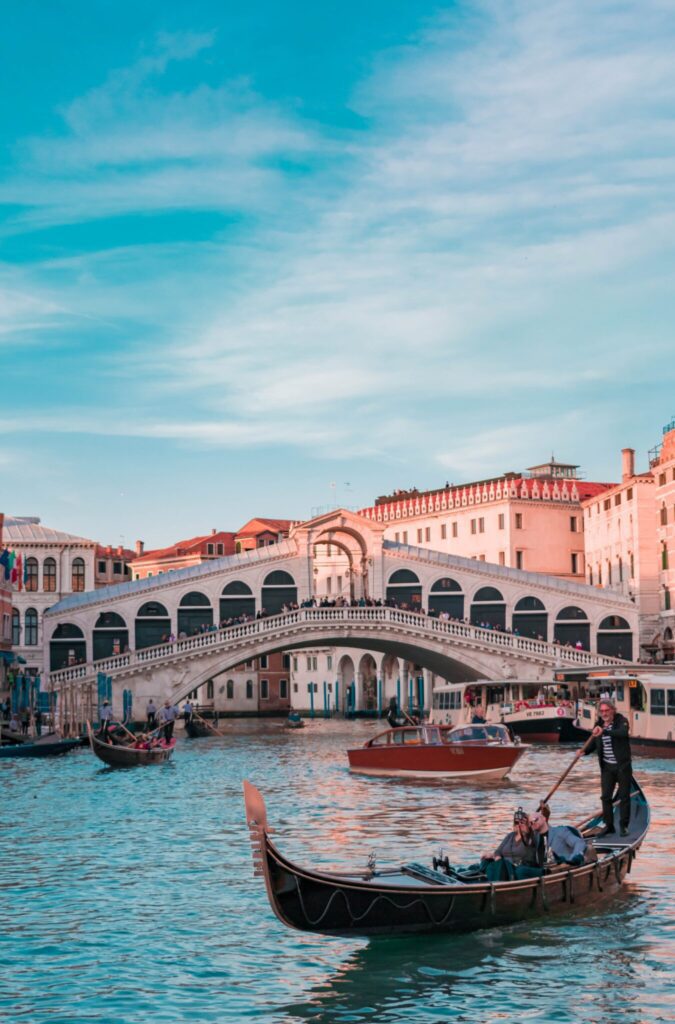
What is the hottest month of the year in Italy?
July is the hottest month of the year in Italy.
The long, warm days give the Aegean Sea a comforting atmosphere, when you can dip your body in the refreshing water whether on the mainland or the islands. The sun accounts for more than 14 hours of generous light, heating the land and sea throughout the month. The mixture of hot weather and large crowds, as well as the surrounding bodies of water, create a layer of humidity that can make a hot day feel sweltering.
Average temperatures around Italy in July and August can reach over 91 degrees on an Athenian afternoon with islands and the mountains offering a slight reprieve. The heat offers great chances for water sports, relaxing on the sand, or sailing, kayaking, and other possible adventures on the water.
What is the coldest month of the year in Italy?
January is the coldest month of the year in Italy.
The average temperature across the country dips to 55 degrees with the mountains and northern borders seeing even colder weather in the heart of winter while islands are generally warmer by a few degrees. The sky can be overcast and when visiting humid or damp areas around the country, the wet atmosphere can feel almost bone-deep.
But beyond the cooler weather, January is a great time to visit Italy, especially if you don’t mind the quieter streets. Some locations offer even better experiences in winter, partially due to the absence of crowds and partially due to the gorgeous landscape featured in surprising blankets of snow or cozy cuisine cooked only in the season.
Find the Right Time of Year for Your Workation
Italy is an exciting destination for any kind of traveler, where beaches and ruins can coexist side by side, and ancient streets can host cosmopolitan restaurants. The atmosphere is unlike anywhere else in the world and you can stay during your Italy Workation for one week, one month, or longer as you learn how to embrace the right work-life balance for you.
Find the information you need to enjoy the weather and culture away from the crowds that can affect your overall experience. Let us help maximize your time and efforts as you navigate the information you need and want to accelerate your productivity. Take one step closer to planning your Workation or find more information about the Top Places to Visit in Italy.


